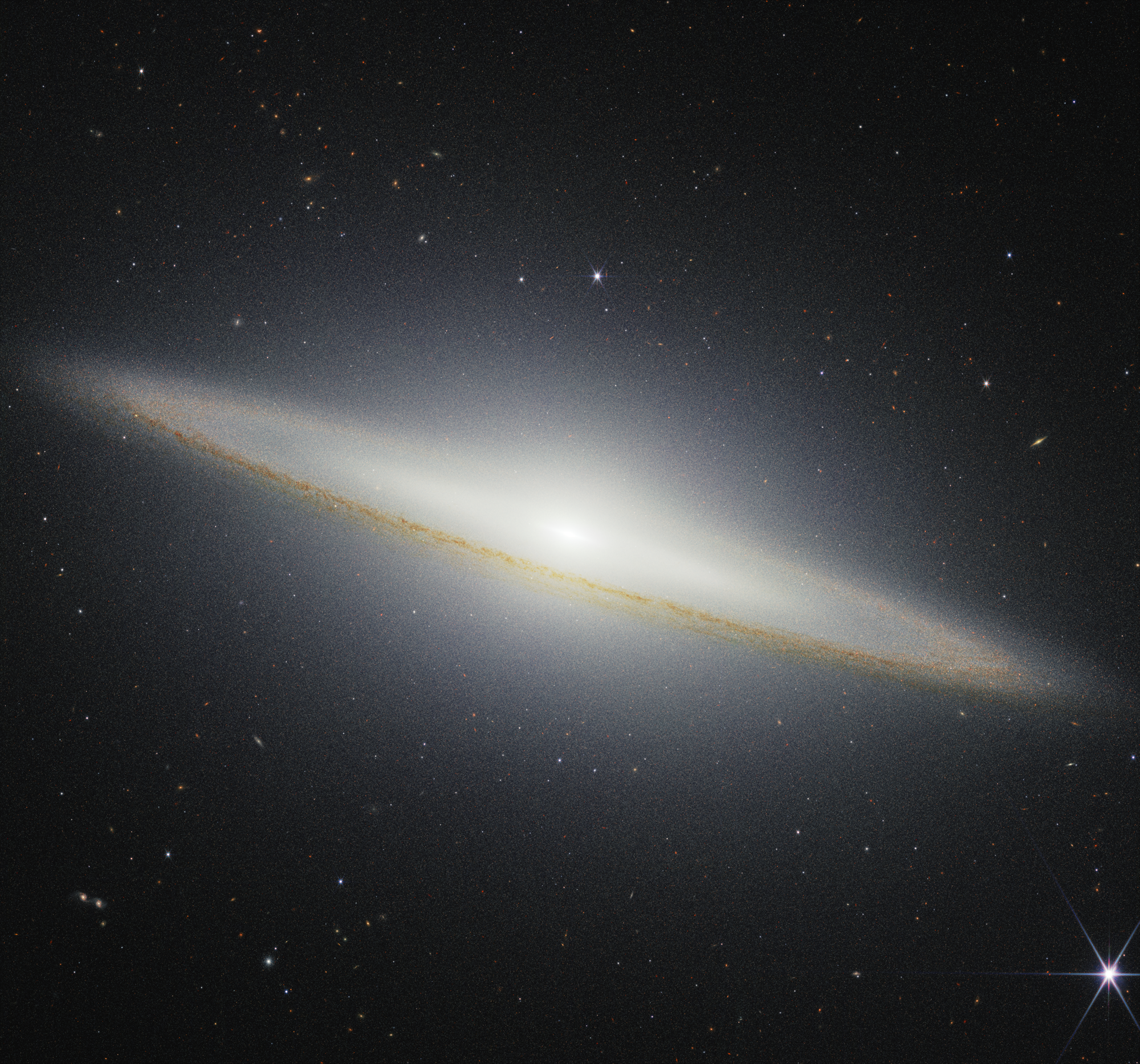Now Reading: Webb Telescope Reveals New Details of Sombrero Galaxy’s Disk
-
01
Webb Telescope Reveals New Details of Sombrero Galaxy’s Disk
Webb Telescope Reveals New Details of Sombrero Galaxy’s Disk

Quick Summary
- NASAS James Webb Space Telescope captured a new near-infrared image of the Sombrero Galaxy (Messier 104), building on its earlier mid-infrared observation from late 2024.
- The near-infrared image highlights the galaxy’s massive star-filled central bulge while revealing that the dust in its outer disk blocks some light.
- Located about 30 million light-years from Earth, this “edge-on” galaxy has a mass equal to roughly 800 billion Suns and is part of the Virgo galaxy cluster.
- Studies suggest its past involved a violent merger with at least one other galaxy, inferred through observations like chemical variations in its globular clusters and warped inner disk structure.
- The Sombrero hosts around 2,000 globular clusters, consisting of old stars whose chemical differences support theories of past mergers.
- Images reveal diverse galaxies scattered across space behind the Sombrero as well as individual red giant stars just outside it detected by NIRCam’s powerful resolution.
- Webb’s multi-wavelength imaging offers new details about how galaxies form and evolve and enhances our understanding when combined with visible data from Hubble.
Indian Opinion Analysis
NASA’s study of galaxies like the Sombrero using tools such as Webb’s advanced imaging technologies substantially broadens humanity’s knowledge about cosmic history, including insights into mergers that shape galactic evolution. Astronomical progress not only deepens our understanding of universal phenomena but also fosters global scientific collaboration between institutions spanning continents.
For India specifically, advancements in space research by agencies like NASA can serve as inspiration for Indian scientists involved in similar missions under ISRO or pursuing collaborations on major international telescopes. With India’s growing focus on space exploration-exemplified by projects such as chandrayaan missions-studies like these highlight areas where India might contribute future expertise or leverage cosmic findings for practical applications tied to astrophysics or education initiatives aimed at fostering curiosity among students nationwide.


























